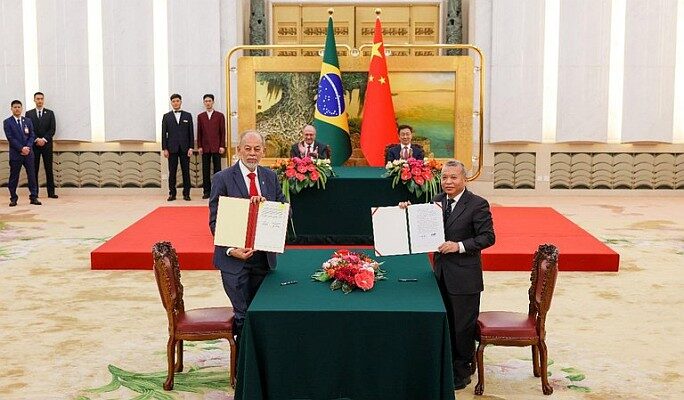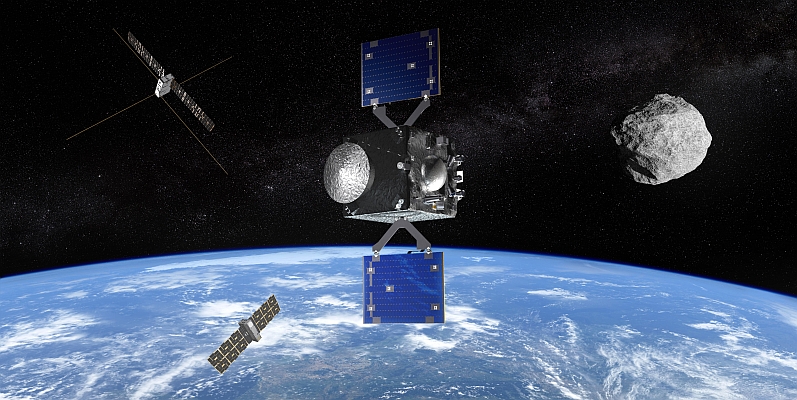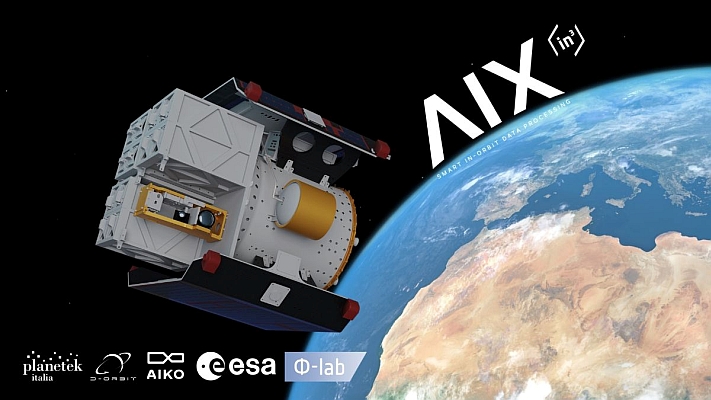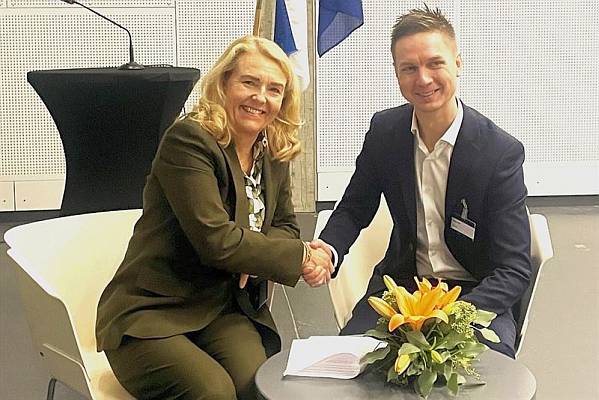Brazil is taking another important technological leap in the aerospace sector. The Brazilian and Chinese governments signed last Thursday (6/6), in Beijing, a Joint Declaration of Intent for the development of the CBERS-5 satellite.
Unlike its predecessors, this will be a geostationary weather satellite. This means that it will be in a specific orbit over the Earth, following the planet’s rotational movement, allowing continuous observation of a specific region.
In the case of CBERS-5, the focus area will be Brazil, providing crucial data for weather forecasting and monitoring extreme weather events, such as droughts, storms, floods.
The new satellite will be designed to offer significant support in observing atmospheric processes more accurately, quickly and efficiently, thus helping to mitigate future natural disasters.
The document was signed during the VII Plenary Session of the Sino-Brazilian High-Level Commission for Concertation and Cooperation (COSBAN). Participating in the ceremony were the vice-president of Brazil Geraldo Alckmin, the secretary of Science and Technology for Social Development at MCTI, Inácio Arruda, who on the occasion represented the minister, Luciana Santos, the director of the National Institute for Space Research (INPE), Clezio De Nardin, as well as other representatives from the China National Space Administration (CNSA).
COSBAN, the main body for political cooperation between Brazil and China, is currently chaired by vice-presidents Geraldo Alckmin and Han Zheng. MCTI coordinates three subcommittees within COSBAN: Science, Technology and Innovation; Industry and Information and Communication Technologies (ICTs); and Space Cooperation. Secretary Inácio Arruda was responsible for reporting to the presidents of COSBAN the activities and collaborative technological development projects carried out by the three commissions over the last two years.
International cooperation
The signing of this Joint Declaration of Intent marks the continuation of successful cooperation between Brazil and China, which has already resulted in previous launches, such as the CBERS-1, CBERS-2, CBERS-2B, CBERS-4 and CBERS-4A satellites , in addition to CBERS-6, currently in the demonstration process.
The next step between MCTI and CNSA is the discussion of technical aspects necessary for the development of CBERS-5. The idea is that a document will be prepared by November that will detail which country will be responsible for building which part of the satellite.
According to Minister Luciana Santos, the new satellite will represent a disruptive advance for science, technology and innovation in the country.
“With CBERS-5, Brazil will join a select group of countries that produce geostationary satellites, which demonstrates the commitment of President Lula’s government to advanced technologies that will bring greater autonomy and sovereignty to the country”,
she said
The minister also highlighted the importance of Brazil having its own meteorological data, in a context of increasing frequency of extreme natural disasters, arising from climate change.
“This is also an initiative by the federal government to respond, from a science and technology point of view, to what we are seeing today in Rio Grande do Sul and other calamities that could happen in the coming years. Having real-time meteorological data will give us greater capacity to prevent, monitor and reduce the impacts of floods and landslides that take lives and destroy entire cities”
, added the minister.
Secretary Inácio Arruda also highlighted the relevance of cooperation in high technology with countries in the Global South:
“The signing of this Joint Declaration between Brazil and China not only deepens the bilateral partnership, but also brings concrete social benefits to our populations in areas such as health, renewable energy, urban planning and agriculture, as well as a great boost to numerical weather forecasting and very short-term forecast for imminent atmospheric events, including extreme events”.
According to INPE director, Clezio De Nardin, the development of CBERS-5 represents a significant advance for meteorology and climate observation, offering tangible benefits, both for Brazil and for countries in the region and the global community.
“Our idea is to share the meteorological data that we will generate with Chinese partners to all other interested countries, with special attention to Latin America and the Caribbean. We can lead a Latin American center for climate predictions from our new satellite”,
concluded the director.
With information and images from MCTI









